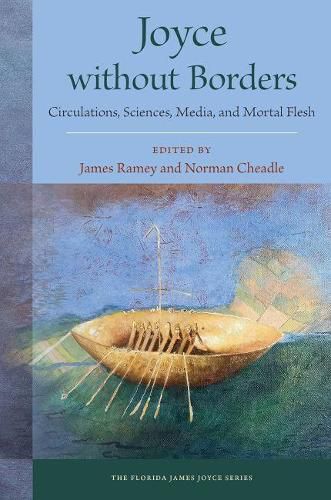Readings Newsletter
Become a Readings Member to make your shopping experience even easier.
Sign in or sign up for free!
You’re not far away from qualifying for FREE standard shipping within Australia
You’ve qualified for FREE standard shipping within Australia
The cart is loading…






This title is printed to order. This book may have been self-published. If so, we cannot guarantee the quality of the content. In the main most books will have gone through the editing process however some may not. We therefore suggest that you be aware of this before ordering this book. If in doubt check either the author or publisher’s details as we are unable to accept any returns unless they are faulty. Please contact us if you have any questions.
This book addresses James Joyce’s borderlessness and the ways his work crosses or unsettles boundaries of all kinds. The essays in this volume position borderlessness as a major key to understanding Joycean poiesis, opening new doors and new engagements with his work. Contributors begin by exploring the circulation of Joyce’s writing in Latin America via a transcontinental network of writers and translators, including Jose Lezama Lima, Jose Salas Subirat, Leopoldo Marechal, Eduardo Desnoes, Guillermo Cabrera Infante, and Augusto Monterroso. Essays then consider Joyce through the lens of the sciences, presenting theoretical interventions on posthumanist parasitology in Ulysses; on Giordano Bruno’s coincidence of opposites in Finnegans Wake; and on algorithmic agency in the Wake. Cutting-edge cognitive narratology is applied to the Penelope episode.
Next, the volume features innovative essays on Joyce in relation to early animated film and comics, engaging with animated film in the Circe episode, Joyce’s points of contact with George Herriman’s cartoon strip Krazy Kat, and structural affinities between open-world gaming and Finnegans Wake. The final essays focus on abiding human concerns, offering new research on Joyce’s creative use of spicy books ; a Lacanian consideration of The Dead alongside Katherine Mansfield’s The Stranger and Haruki Murakami’s Kino ; and a meditation on Joyce’s uncertainties about the boundary between life and death. For Joyce, borders are problems-but ones that provided precious fodder for his art. And as this volume demonstrates, they encourage brilliant reflections on his work, from new scholars to leading luminaries in the field.
$9.00 standard shipping within Australia
FREE standard shipping within Australia for orders over $100.00
Express & International shipping calculated at checkout
This title is printed to order. This book may have been self-published. If so, we cannot guarantee the quality of the content. In the main most books will have gone through the editing process however some may not. We therefore suggest that you be aware of this before ordering this book. If in doubt check either the author or publisher’s details as we are unable to accept any returns unless they are faulty. Please contact us if you have any questions.
This book addresses James Joyce’s borderlessness and the ways his work crosses or unsettles boundaries of all kinds. The essays in this volume position borderlessness as a major key to understanding Joycean poiesis, opening new doors and new engagements with his work. Contributors begin by exploring the circulation of Joyce’s writing in Latin America via a transcontinental network of writers and translators, including Jose Lezama Lima, Jose Salas Subirat, Leopoldo Marechal, Eduardo Desnoes, Guillermo Cabrera Infante, and Augusto Monterroso. Essays then consider Joyce through the lens of the sciences, presenting theoretical interventions on posthumanist parasitology in Ulysses; on Giordano Bruno’s coincidence of opposites in Finnegans Wake; and on algorithmic agency in the Wake. Cutting-edge cognitive narratology is applied to the Penelope episode.
Next, the volume features innovative essays on Joyce in relation to early animated film and comics, engaging with animated film in the Circe episode, Joyce’s points of contact with George Herriman’s cartoon strip Krazy Kat, and structural affinities between open-world gaming and Finnegans Wake. The final essays focus on abiding human concerns, offering new research on Joyce’s creative use of spicy books ; a Lacanian consideration of The Dead alongside Katherine Mansfield’s The Stranger and Haruki Murakami’s Kino ; and a meditation on Joyce’s uncertainties about the boundary between life and death. For Joyce, borders are problems-but ones that provided precious fodder for his art. And as this volume demonstrates, they encourage brilliant reflections on his work, from new scholars to leading luminaries in the field.